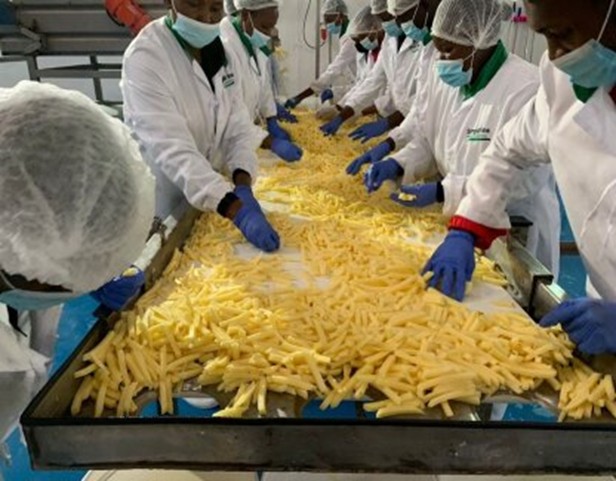
Potato is a major staple crop in many Eastern African households, but its role is expanding beyond the dinner table. Across Kenya, Rwanda, and Uganda, the potato processing industry is experiencing rapid growth, particularly in the production of chips and crisps. However, this burgeoning sector faces a key challenge: responding to the needs of both farmers and processors. How can breeding help close this gap? The CGIAR Initiative on Market Intelligence has recently conducted a study that offers insights that could inform the future of potato breeding in Eastern Africa.
A growing industry with growing pains
In Eastern Africa, potatoes are one of the top food crops in Kenya, second only to maize. Though a critical source of income for smallholder farmers, yields remain low, and the quality of crops often fails to meet the demands of the expanding processing industry. The result? Farmers are struggling to keep up with the industry’s growing appetite for high-quality potatoes that have the traits required for processing, resulting in increased import of frozen ready-cut chips and crips from abroad.
Breeders and processors: Two sides of the same coin
One of the key findings of the study is that priorities set by breeders and the industry’s requirements often are not perfectly aligned. Breeders have traditionally focused on traits such as disease resistance, drought tolerance, and yield, which are essential for farmers working in challenging conditions. Meanwhile, the processing industry is more concerned with traits that affect the end product—such as tuber size, shape, frying color, and oil absorption.
For example, processors prefer potatoes with a golden-yellow frying color and tubers that are long and oval for chips, while round and medium-sized tubers are ideal for crisps. They also need potatoes that can be stored for months without losing their processing qualities. Breeders, while aware of these needs, tend to prioritize these traits later in the breeding process.
Bridging the gap: Need for varieties suitable for both farmers and processors
To address this growing mismatch, the research suggests a shift in breeding priorities toward the development of potato varieties that not only thrive in the region’s agricultural conditions but meet the specific needs of the processing industry. One promising approach is to pay more attention to processing traits in breeding and involve the processing industry earlier in the selection process, ensuring that traits like tuber shape, size, and storability are considered from the start.
Challenges and opportunities
The potato processing industry in Eastern Africa has tremendous growth potential, with demand for processed products like chips and crisps outstripping supply. However, breeding is only part of the solution. The limited access to high-quality seed remains a major barrier for farmers. Breeders and processors agree that improving access to quality seed, along with strengthening the business relationships between farmers and processors, is crucial for the future of the sector. Looking ahead, a stronger collaboration between breeders, farmers, and processors will be key to ensuring its continued growth. With the right focus, Eastern Africa’s potato industry could become a model for sustainable agricultural development that benefits both smallholder farmers and large-scale processors.
Based on the study’s findings, recommendations have been provided for refining the CGIAR market segmentation and the target product profile (TPP) for potato in Eastern Africa, as discussed in this brief.
Recently, the study has been published in Potato Research, the journal of the European Association for Potato Research.